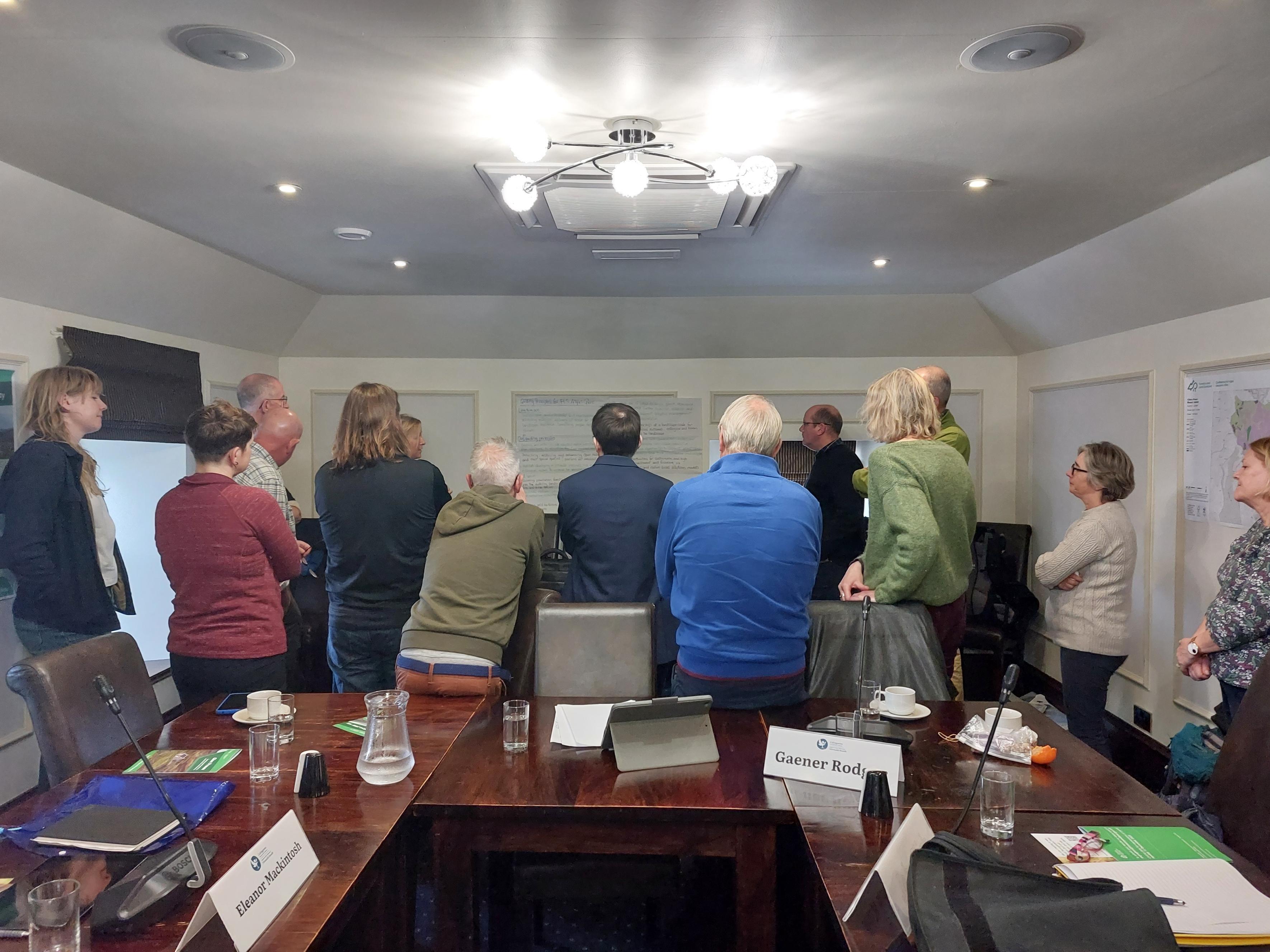Park Authority outlines how river catchment restoration can help mitigate flooding

Park Authority outlines how river catchment restoration can help mitigate flooding
Members of the Cairngorms National Park Authority were in Angus on Friday, 27 October, meeting local councillors and Forest and Land Scotland, with flooding high on the agenda during the discussions.
While the gathering had been planned for some time, the recent flooding events in the region brought the topic to the fore – looking at how working with land managers in the upper catchments of the area’s rivers could help alleviate catastrophic flood events downstream, coupled with site specific solutions within communities affected.
The Park Authority is already working with many land owners and managers to mitigate the impacts of climate change, with peatland restoration happening at scale and pace along with river restoration projects which will bring direct benefits to people and biodiversity.
Sandy Bremner, Convener of the Cairngorms National Park Authority board said: “I would like to express my sincere sympathies to those people who have been affected by the recent floods in Angus and other areas. These are very challenging times for residents, local authorities and other organisations involved.
“I am strongly of the opinion that the National Park has a key role to play in helping these communities in the future – even though they are not within the Park – with the sources of the area’s rivers being high up within the Cairngorms.
“Our river catchments run through the heart of communities within the National Park and beyond, providing fertile floodplain farmland, supporting industry and employment, tourism and recreational activity. They provide a source of water for the towns and villages and support internationally important populations of Atlantic salmon and freshwater pearl mussel.
“Our three largest catchments in the Cairngorms National Park – the Dee, Spey and the Angus Glens – have a long history of human engineering, their waters routinely abstracted for agriculture, industry and domestic supply. Couple all that to the impacts of climate change of increased flood events, increasing temperatures and drought and you have rivers under serious pressure.
“Working with partners we aim to increase climate change resilience to reduce flood risk and ensure that rivers continue to deliver for the people and wildlife that depend upon them.”
Forest and Land Scotland (FLS) was also in attendance. Currently consulting on the future of recent acquisition Glen Prosen, FLS is also working towards developing an over-arching Angus Glens management plan that will cover Glen Prosen, Glen Doll, Glen Isla and Glen Markie.
FLS East Region Manager, David Leven, said: “Our long-term vision for our Angus Glens plan is the establishment of a landscape scale approach to land management that we hope will involve neighbouring land owners and managers in the area.
“This will give us a golden opportunity to effect major changes that will benefit climate emergency mitigation, habitats and wildlife, as well as local people and communities. In East Region we now have three years’ worth of experience of the impact of extreme weather and mitigating the effects, both on the land in our care and on the surrounding communities, will feature prominently in our thinking.”
Angus Councillor, Chris Beattie – also a member of the Cairngorms National Park Authority board – commented: “We know that a multi partnership approach is needed to tackle the issue of flooding and while flood defences in towns and villages at risk are crucial, by restoring river catchments and therefore slowing the flow of water, this will bring benefits downstream and hopefully not see engineered solutions breached as has happened here. I realise that nature based solutions will take time to take effect but I am grateful that we have had the opportunity today to explore and discuss some of the options going forward.”
Alert
Latest from the National Park
Update on wildfire situation
Convener Sandy Bremner and Chief Executive Grant Moir have given an update on the ongoing wildfire situation.
Statement on wildfires
An update from Grant Moir, Chief Executive of the Cairngorms National Park Authority, on the ongoing wildfires in Moray and Highland.
New Nethy houses get green light
Meeting in Ballater, the Planning Committee approved applications for a development of 35 houses in Nethy Bridge and a floodplain restoration scheme on the River Dee.
Relevant alerts
-
As a result of ongoing efforts to tackle wildfires to the north of the Cairngorms National Park, several roads are currently closed. Scottish Fire and Rescue are in attendance and the public are advised to avoid the area, including footpaths. Road users are asked not to ignore road closed signs.
The affected roads are:
- B9007 Ferness to Duthil
- U2379 Lochindorb Road
- B939 Ferness to Grantown-on-Spey
- U2347 Braes of Castle Grant
For all the latest information check out the Scottish Fire and Rescue Service and Police Scotland website and social media.




